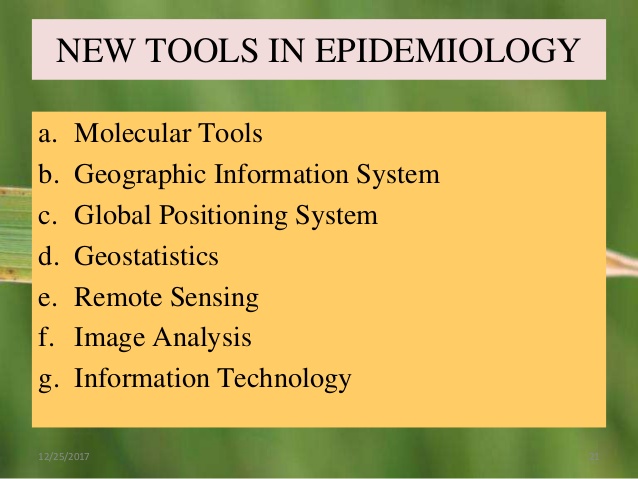
New Tools in Epidemiology
NEW TOOLS IN EPIDEMIOLOGY
The study of plant disease epidemiology has been facilitated greatly by new methods and new equipment that make possible studies of aspects of plant disease that were impossible or very difficult to study earlier. Some of the equipment and instruments that have contributed to modern epidemiology have been listed already. Some of the methods and other equipment that have been used to great advantage in plant disease epidemiology include the following.
Molecular Tools
The most important of these are the development and use of genetic (DNA) probes that allow the definitive detection and identification of a plant pathogen within or on the surface of a plant tissue, in a mixture with other microorganisms, and even in the vicinity of the host plant. The detection and identification of a pathogen by its genetic probe, however, are made immensely more effective through the use of the polymerase chain reaction (PCR) technique, which amplifies greatly a specific fragment of DNA present on a probe and produces millions of copies of it. These copies are then abundant enough to be detected, identified, and studied by conventional or other molecular tools.
Random amplified polymorphic DNA (RAPD) markers are often used to detect genetic similarities among pathogenic strains known to show genetic heterogeneity and can also be used easily for designing sequence characterized amplified region (SCAR) markers for detecting the pathogen in infected plant tissue. The significance of the contributions of these, and some other, molecular techniques in epidemiology lies in the fact that they can detect pathogen arrival much earlier than could be detected before, thereby allowing the grower time to get ready and to apply whatever management treatment is most effective against the pathogen. Moreover, these techniques can detect any new mutant pathogens early that could either attack plant varieties they could not attack before or they may tolerate the fungicide to which they were sensitive before and thus produce a new resistant race. Detection of such changes in pathogens is of paramount importance in epidemiology because such changes in pathogens make useless and necessitate immediate revision of any previous predictions about the development of the epidemic and recommendations for management of the disease.


